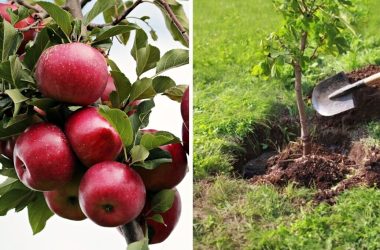Last Updated on: 5th August 2024, 08:26 pm
Artificial intelligence could cut global greenhouse gas emissions by 4% by 2030. This shows the crucial role of technology in fighting climate change. Dave Antrobus, at Inc & Co, is at the forefront of using AI to protect our environment. This technology is changing the game in controlling pollution, managing resources, and saving nature.
Dave Antrobus is leading the way in using AI for a greener UK. As the world faces a growing climate crisis, AI offers solutions. It not only reduces environmental harm but also leads to broad changes. Antrobus’s work provides a glimpse into a future where tech helps balance digital advancement and nature care.
Introduction to Dave Antrobus and AI Technology
Dave Antrobus is a key figure where artificial intelligence meets environmental care. He pushes for using tech innovations to help the planet. His ideas are grounded yet forward-thinking, pulling from stories where tech solves green problems.
Dave Antrobus uses AI to tackle real environmental issues. He looks at things like climate change prediction and fighting pollution with AI. He believes in technology and nature working together. This aim is to create a sustainable world for us all.
The Role of AI in Environmental Sustainability
AI plays a key role in making the environment better. It helps us fight climate change and use our resources wisely. For example, the building industry uses most of the raw materials we get each year. AI robots help recycle materials at a higher rate, which is great for the environment.
Startups are using AI to recycle wood in a smarter way. They take out nails and fasteners so we can use the wood again. This doesn’t just cut down on waste; it also makes building more sustainable. A big part of a building’s carbon footprint comes from its materials. That’s why it’s important to have AI that can help reduce emissions.
AI is also making waste management better. It leads to tidier building sites with fewer trucks coming and going. This means building projects can cost less to start and keep going. So, AI is not just good for the planet. It also saves money and pushes us towards greener ways of doing things.
Investing with the environment in mind is becoming more popular. ESG investing looks at how companies perform in caring for the environment, among other things. It’s different from other types of investing because it also thinks about financial returns. ESG investing can spot companies that are run well and are more likely to do well in the long run. This helps make the world a better place for everyone.
The widespread use of AI in green tech is a new chapter in environmental management. With AI, we can tackle environmental issues more effectively and efficiently. This opens the door to a future where we live in harmony with our planet, thanks to smarter, responsible technology.
AI-Powered Environmental Monitoring
AI-powered environmental monitoring is changing how we gather and study nature’s data. This tech is making sustainability more accessible for industries. It helps businesses make their operations more eco-friendly.
This smart monitoring gathers detailed environmental info. This lets organisations see their ecological impact as it happens. For example, construction sites can cut down on carbon emissions by using AI. This industry uses 93% of raw materials every year. AI helps these sites work smarter to lower their carbon footprint and waste less. This means more materials can be recycled.
Startups are using AI and robots to recycle materials like scrap wood better. These systems prepare the wood for reuse in building projects. This is a great mix of tech and care for our planet. AI also makes workplaces safer. It uses robots that recognize objects to sort waste at recycling centers.
AI is improving how we manage buildings too. It can find problems in buildings early and suggest fixes. This is done by looking at past data. Now, buildings can save energy in real-time, not just when problems arise.
AI also helps find the right balance between different types of carbon emissions in building projects. This is important for both the planet and saving money. It means efforts to be greener can also be cost-effective.
The role of AI in making industries more sustainable is huge. It gives us the tools to better understand and protect our environment. This aligns with a growing awareness of the need to care for our planet.
AI and the Environment
AI is leading the way in environmental conservation. By looking at old environmental data, it predicts and helps create sustainable futures. This mirrors how revisiting stories can enlighten us today. With technology, we’re able to keep and improve Earth’s ecological balance.
AI’s smart algorithms help monitor forests, track animals, and predict natural disasters. This lets us respond quickly and effectively. These advancements aren’t replacing humans but helping us protect our planet better. As AI grows, it mixes old methods with new ideas for the environment.
AI’s impact on saving the planet is getting more attention. McKinsey found over 72% of businesses use AI to work better. AI will soon move from simple chatbots to handling complex tasks. Predictions say billions of these agents will change how we make decisions and improve results in many areas.
There’s a big increase in AI development, with major investments in new models. Meta aims to make its AI the world’s top choice. Their spending on AI research shows how important it is. As AI spreads across fields, it’ll surely help us live more sustainably and care for the environment.
Case Studies from the UK on AI and Environmental Initiatives
The UK is leading the way in using AI to help the environment. Many case studies show that AI systems can make a big difference in green projects. With AI, the UK is showing the world how technology can keep our planet safe.
The TOD’S Group has taken a big step by using AI for better energy use. They installed a solar energy system that covers nearly 78% of their daily energy needs. This move has cut down carbon emissions by about 126 tonnes between April and December 2023.
Part of their success comes from using SolarEdge Power Optimizers. These make sure power loss affects only panels that are shaded or dirty. It’s a great example of the UK’s smart approach to energy use.
The use of AI in facilities management is expected to grow by 5% each year until 2026. With SolarEdge technology used by many top companies, its global influence is clear.
In healthcare, AI is also making waves, thanks to QuickMed. CEO Lena Esmail highlighted how AI helps them improve environmental health. QuickMed’s AI boosts diagnosis accuracy and offers tailored patient care. They also support local farming and fight environmental toxins.
These stories from the UK show the power of AI in supporting green efforts. AI is proving useful in many areas, leading to better care for our planet. This trend towards using AI for sustainability is shaping a brighter, greener future.
AI Technology in Pollution Control
AI technology is making big changes in fighting pollution, moving us towards cleaner air and water. This progress fits perfectly into stories of hope and healing that we love in books and movies. It shows our ongoing fight to fix our planet’s health with smart solutions.
By analyzing where pollution comes from, AI helps industries fight it better. Companies can now spot and stop pollution before it becomes a big problem. Knowing what might happen before it does lets us protect our environment more effectively.
AI is also making our pollution-fighting tools smarter. With things like machine learning, we can now watch pollution levels all the time. This helps us do something about it fast, which means less harm to nature.
New AI technology means new ways to keep our air and water clean. This includes smart devices that notice changes in air quality and systems that keep industrial fumes in check. These advancements make fighting pollution more accurate and reliable, helping our planet greatly.
As more countries and companies use AI to tackle pollution, our chances of fixing environmental issues get better. This change is like a story of hope, where technology and the natural world work together beautifully. It’s a step towards a future where both can thrive.
Digital Green Tech: AI’s Impact on Future Environmental Policies
Digital green tech is growing fast, changing how we plan for the planet’s future. By mixing AI with care for the environment, we’re starting a new chapter. This chapter uses data to help leaders make green laws that face big nature problems.
AI is key in making these new green laws. It lets us understand huge data sets on the environment. This helps find trends and guess what the future might bring. So, lawmakers can make plans that keep our world safe and sound for longer.
AI doesn’t just help make the laws; it also watches over them. For example, AI tools can spot where the environment is hurt, check air and water, and see if laws are working. This means we can fix problems faster than before.
For our economy to grow without harming the planet, we need smart laws. AI is crucial here, offering ways to measure what businesses do to nature. It suggests how to better use resources and predicts the effects of our actions on the earth.
As AI gets better, its role in making green laws will grow. This leads to smarter ways to handle environmental issues. Leaders need to be ready for this change to make strong laws that last and protect our world.
Digital green tech has huge potential to change how we protect nature. With AI, future laws will be smarter and more focused. This means we can look ahead and craft policies that keep both our planet and our way of life secure.
Challenges and Limitations of AI Technology in Environmental Efforts
Addressing AI obstacles involves many challenges that need careful attention. These include the high costs of setting up and keeping AI systems running. For example, to improve spreadsheet table detection by 25.6%, a big investment is needed.
Using AI in environmental tech also brings up ethical and data privacy issues. It’s like exploring gothic literature, where innovation and privacy are in a delicate balance. Techniques like context compression, which make RAG systems faster and more efficient, raise concerns about keeping user data safe.
The environmental tech limitations also cover the struggles with Large Language Models (LLMs). These models have trouble with complex logical relationships, especially in short texts. The Mixture of Multimodal Experts (MoME) shows some potential, but real-world uses are still limited.
AI advancements, like the Gemini-style model solving math problems, show what’s possible and what’s lacking. To use these models for the environment, we must tackle issues like ethical challenges and data misuse.
Combining AI in cancer detection with strategies like SurvReLU shows we can mix clear and complex approaches. But, we still need to be careful and ethical when using AI for the environment.
In summary, AI offers a lot of promise for the environment. But overcoming its challenges and limitations is key. We need a balance between progress and careful oversight to responsibly use AI technologies.
AI Innovations: Paving the Way for a Sustainable Future
AI is revolutionizing our approach to a green future by improving environmental tech. For instance, researchers at MIT’s CSAIL have boosted robotic efficiency by 67% with RialTo. This shows AI’s potential to enhance accuracy and speed in labs and the real world.
These advancements lead to better environmental monitoring and management. RialTo has made significant strides in tasks like handling toasters or shelving books, outdoing old methods in tricky situations. By tapping into AI’s flexibility, scientists hope to better adapt these technologies, aiming for a greener tomorrow.
Groups like MIT CSAIL and the University of Washington have joined forces, backed by names like the Sony Research Award and Hyundai. Their work is crucial in refining AI’s role in environmental efforts, showing the weight of such partnerships.
Efforts like NAIC’s adoption of the Trial Rearing Unit and NRGene’s genomic work are expanding AI’s use in conservation. They’re merging AI with genomics to streamline and cheapen insect protein production, pushing environmental progress.
Bühler aims to cut energy, waste, and water use by half by 2025, and lower gas emissions by 60% by 2030. By dedicating 5% of its yearly turnover to R&D, Bühler is leading the charge in combining AI with sustainability.
Environmental Benefits of AI in Agriculture
AI is changing farming for the better. It lessens the need for lots of water and chemicals, supporting greener farming. With smart farming, crops can grow more while harming the environment less.
AI’s accuracy is a big win for the environment. It uses data to know exactly how much water and food plants need, cutting down waste. This helps save precious resources and keeps the soil healthy for future farming.
AI also helps farmers fight pests in a kinder way to nature. Instead of spraying lots of chemicals, AI predicts when pests might attack. This means farmers use less harmful sprays and keep the ecosystem safe.
Smart farming also cuts down on farms’ carbon emissions. AI makes tractors and other machines run more efficiently. This means less fuel is used, which helps in the fight against global warming and supports green farming.
Adopting AI in farming could lead to a better, more sustainable way of producing food. It promises a future where farming and nature work together well. This way, we can feed more people without using up our planet’s resources.
Public Perception and Support for AI in Environmental Solutions
People’s views on AI in environmental conservation play a big role in accepting and using these technologies. As we face more environmental problems, the community’s support for AI reflects our hope for ecological solutions. This feeling is similar to stories where characters overcome tough situations, showing our love for long-term benefits to our planet.
Studies reveal that involving the community is key to embracing AI. By showing how AI reduces environmental harm, we can increase support for such technology. It’s like when we see characters in stories face challenges and win, our reaction to AI can shift towards more support. For example, in the media, stories that show the positive impact on the environment tend to get more attention. This is similar to how 91.8% of people supported warnings about animal suffering after watching relevant videos online.
Educating the public and being clear about AI’s environmental role is also crucial. Just as people want detailed reports on greenhouse gas emissions, clear information on AI’s impact can build trust. Recent figures show a growth in environment-focused activism, with the number of proposals for environmental change in the U.S. increasing from 319 to 349 in a year.
In the end, it’s essential to have public support for using AI in saving our environment. By encouraging people to learn, support environmental technology, and communicate openly, we can boost public backing. This support is crucial for introducing new AI solutions that can help us manage our environment better.
Conclusion
Dave Antrobus highlights the journey of AI towards sustainable tech. It plays a big part in improving how we monitor our environment. Through AI, we can better control pollution, helping reduce harmful impacts caused by people.
This tech isn’t just for show; it’s making real changes, especially in farming in the UK. AI is proving itself by tackling problems and boosting green projects. Dave Antrobus sees AI as key to eco-friendly innovations.
But it’s not just about the tech; people’s views and ethical concerns matter too. Embracing AI in saving the environment means we’re starting a new chapter. One where AI and caring for Earth go hand in hand, aiming for a green future. AI is becoming essential in our fight to protect the planet.






